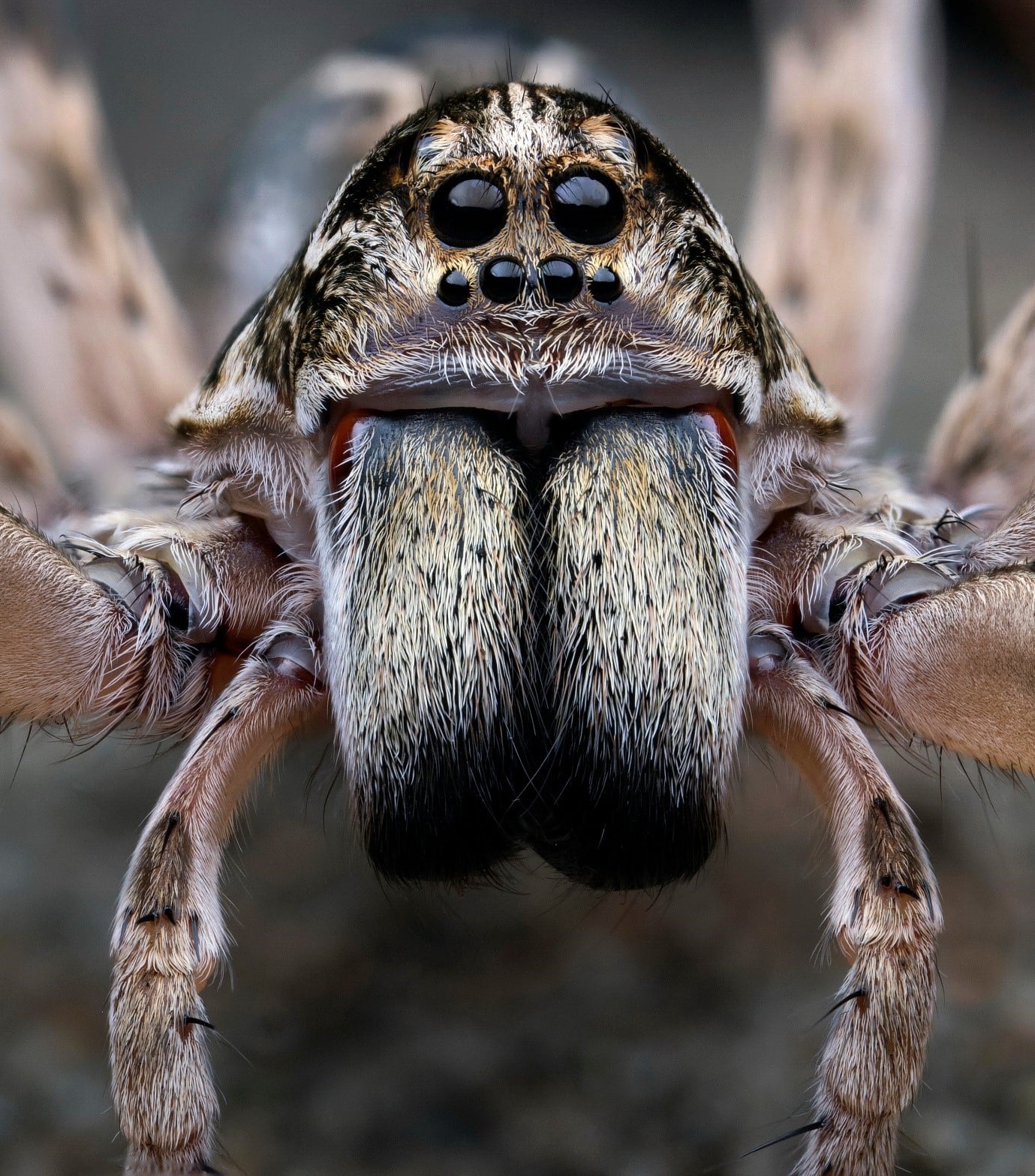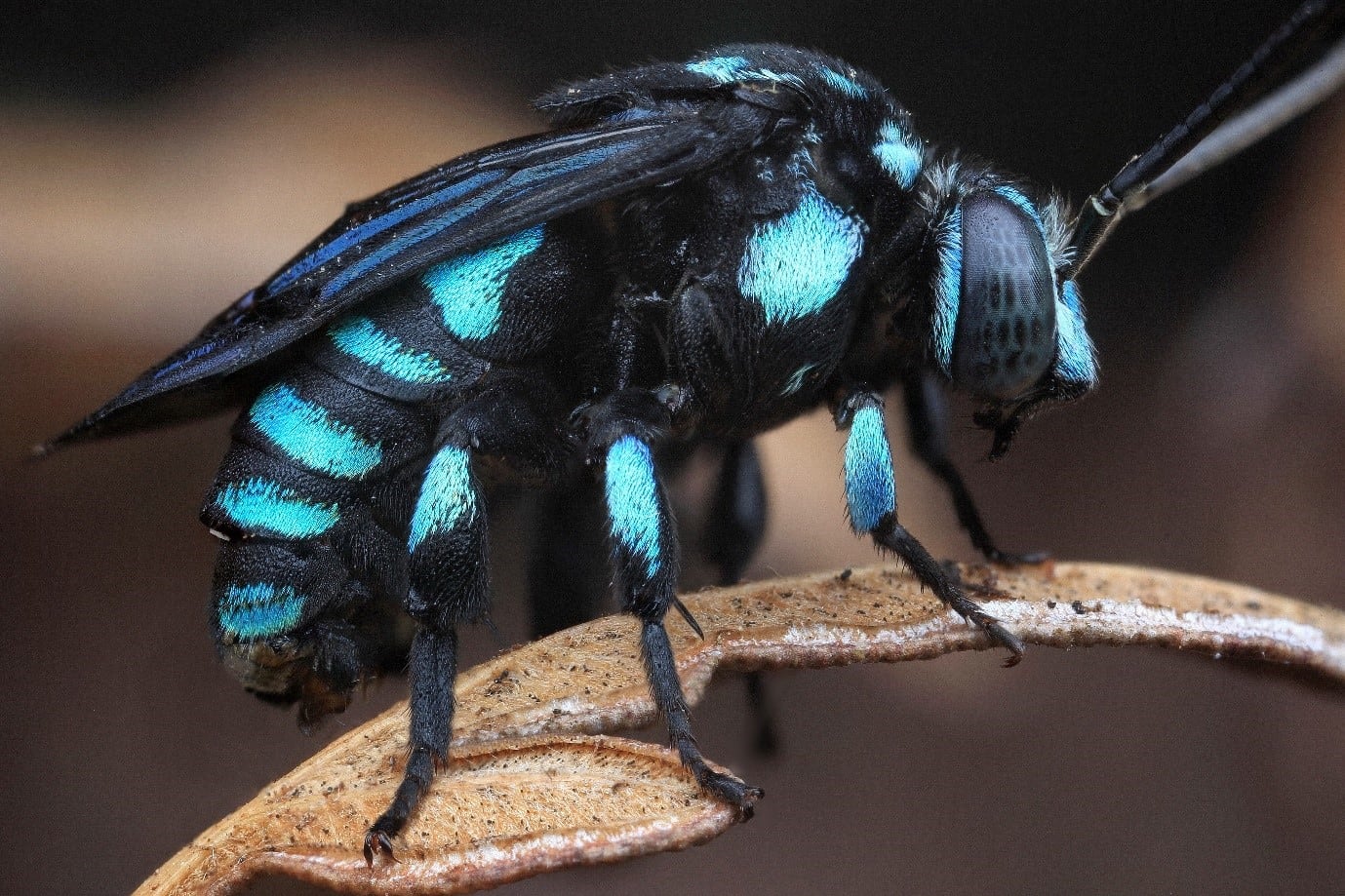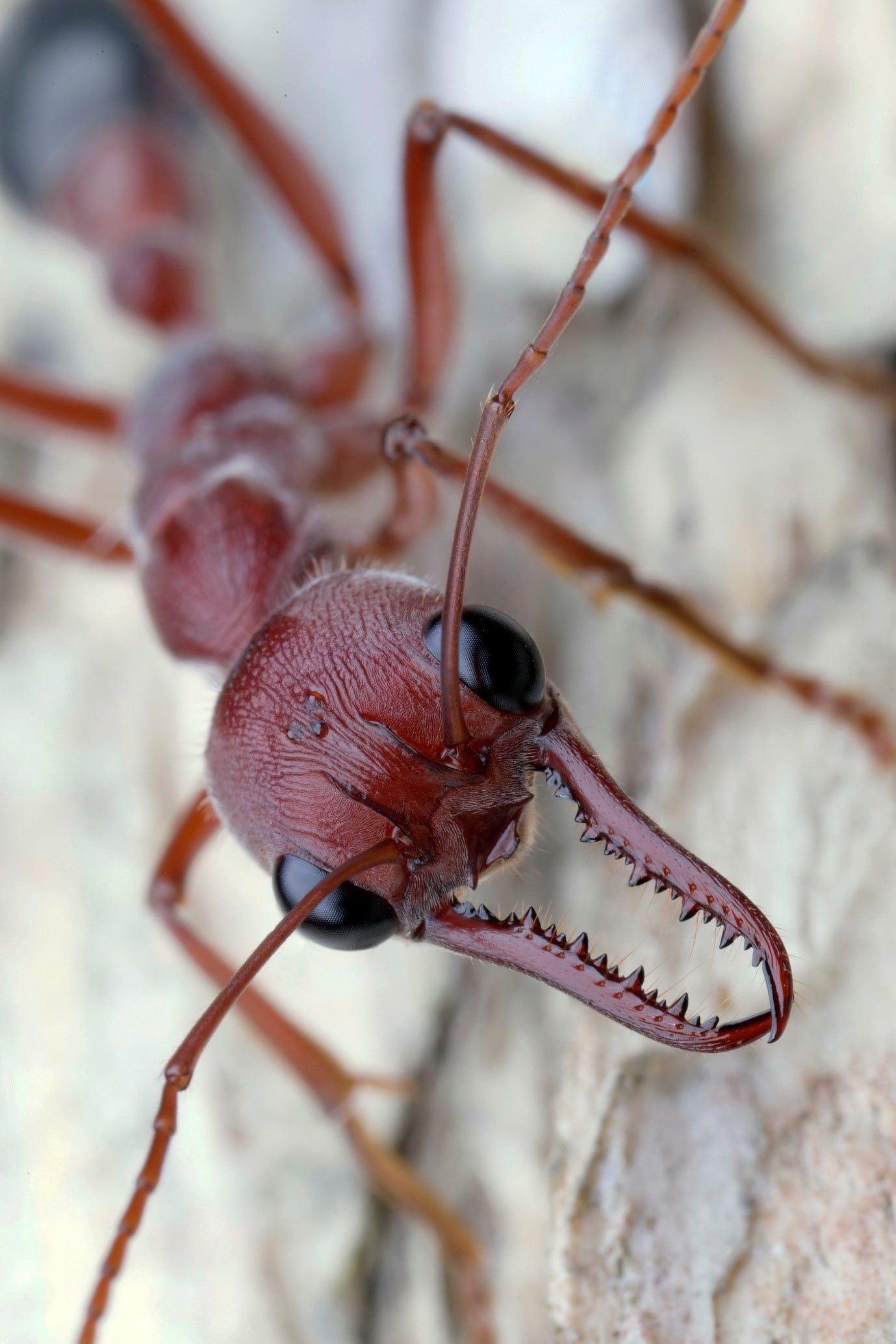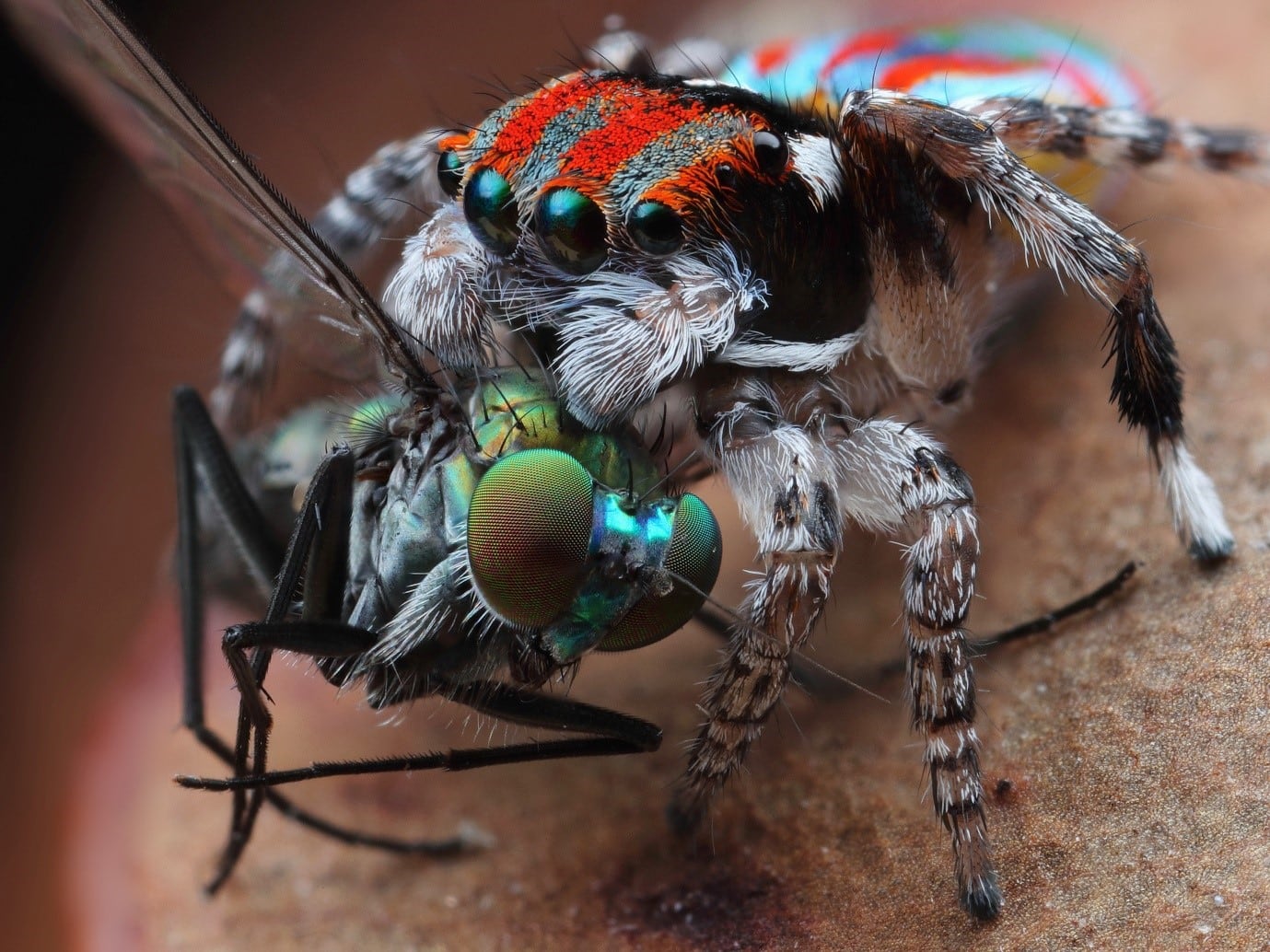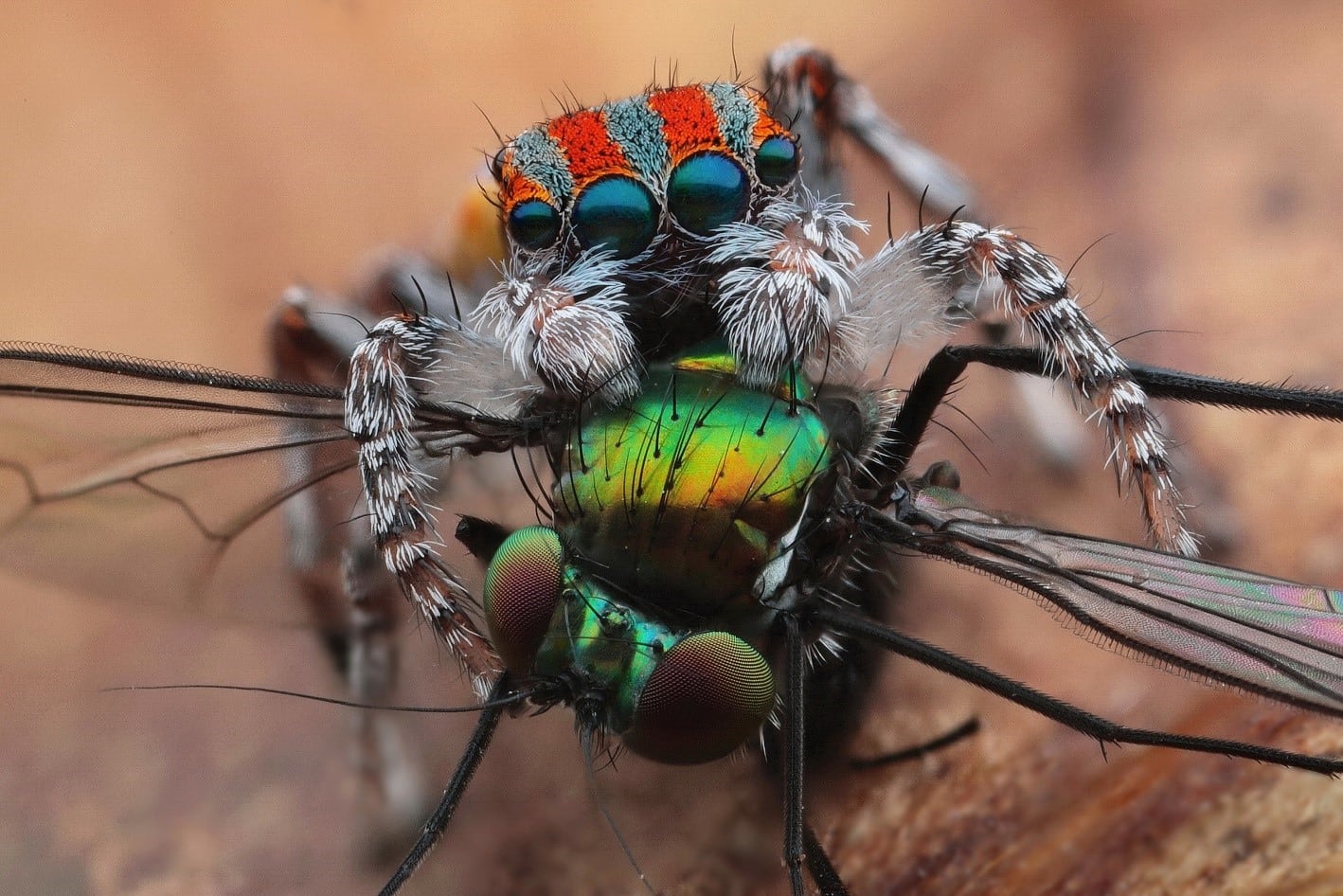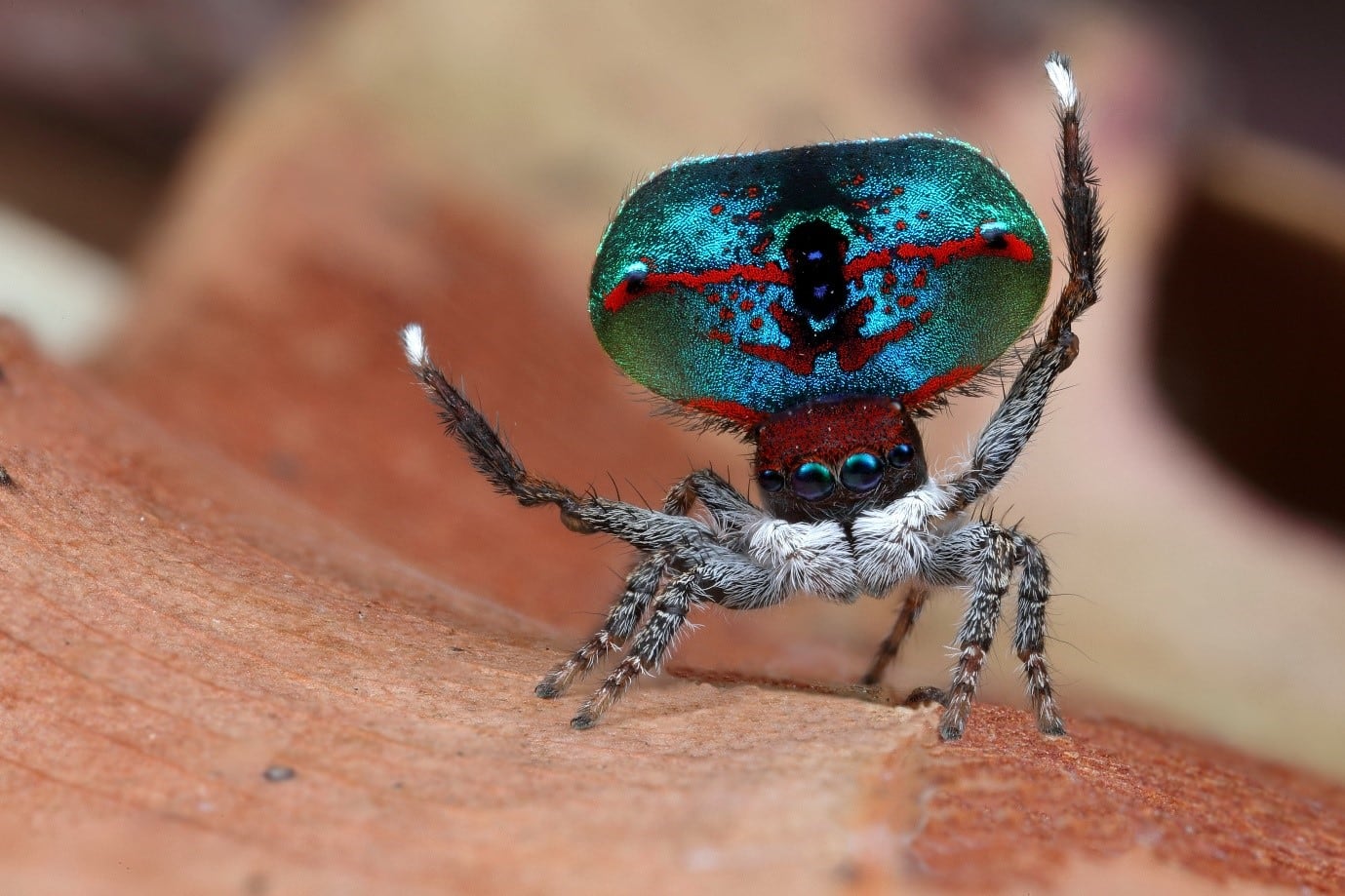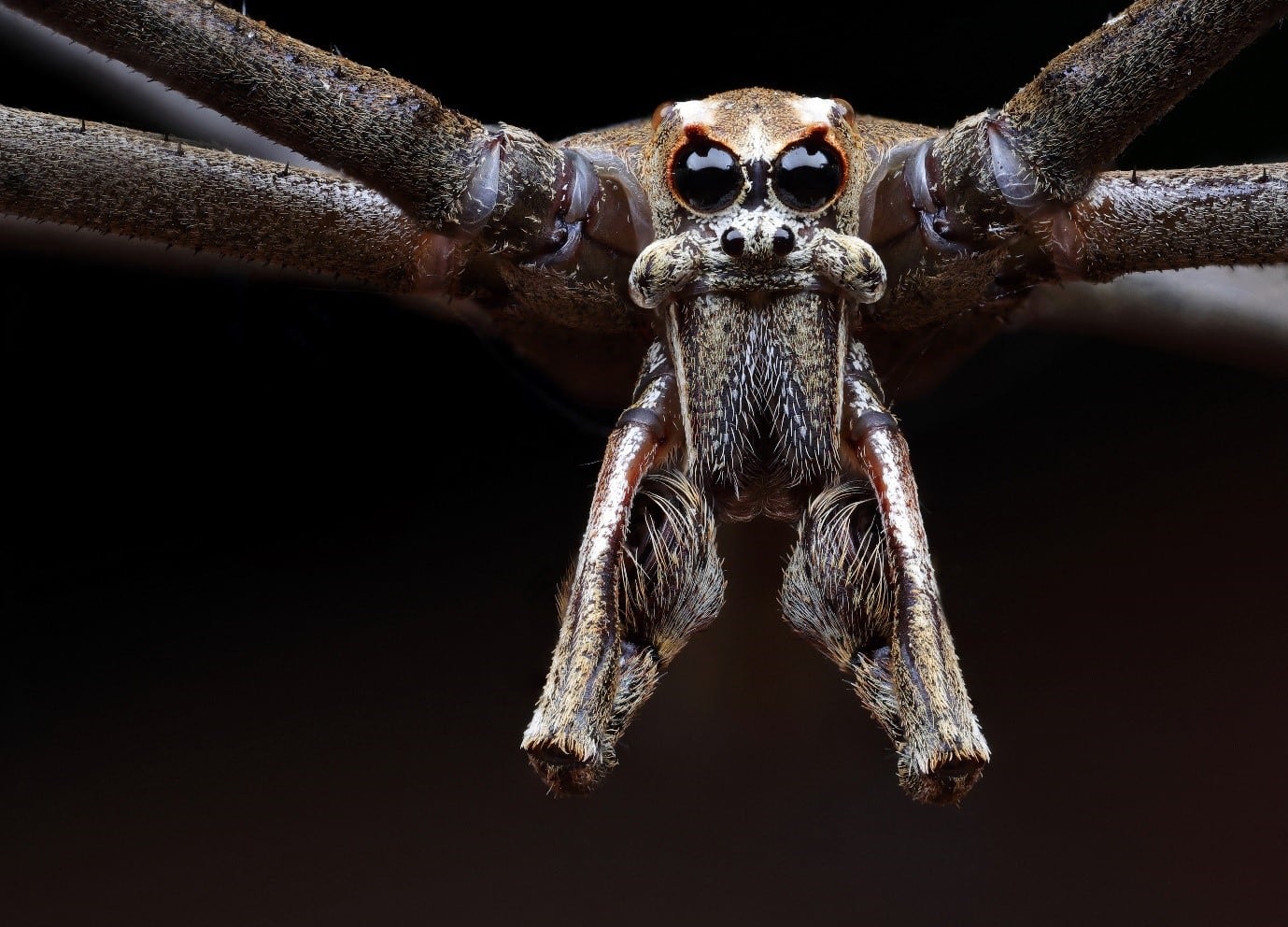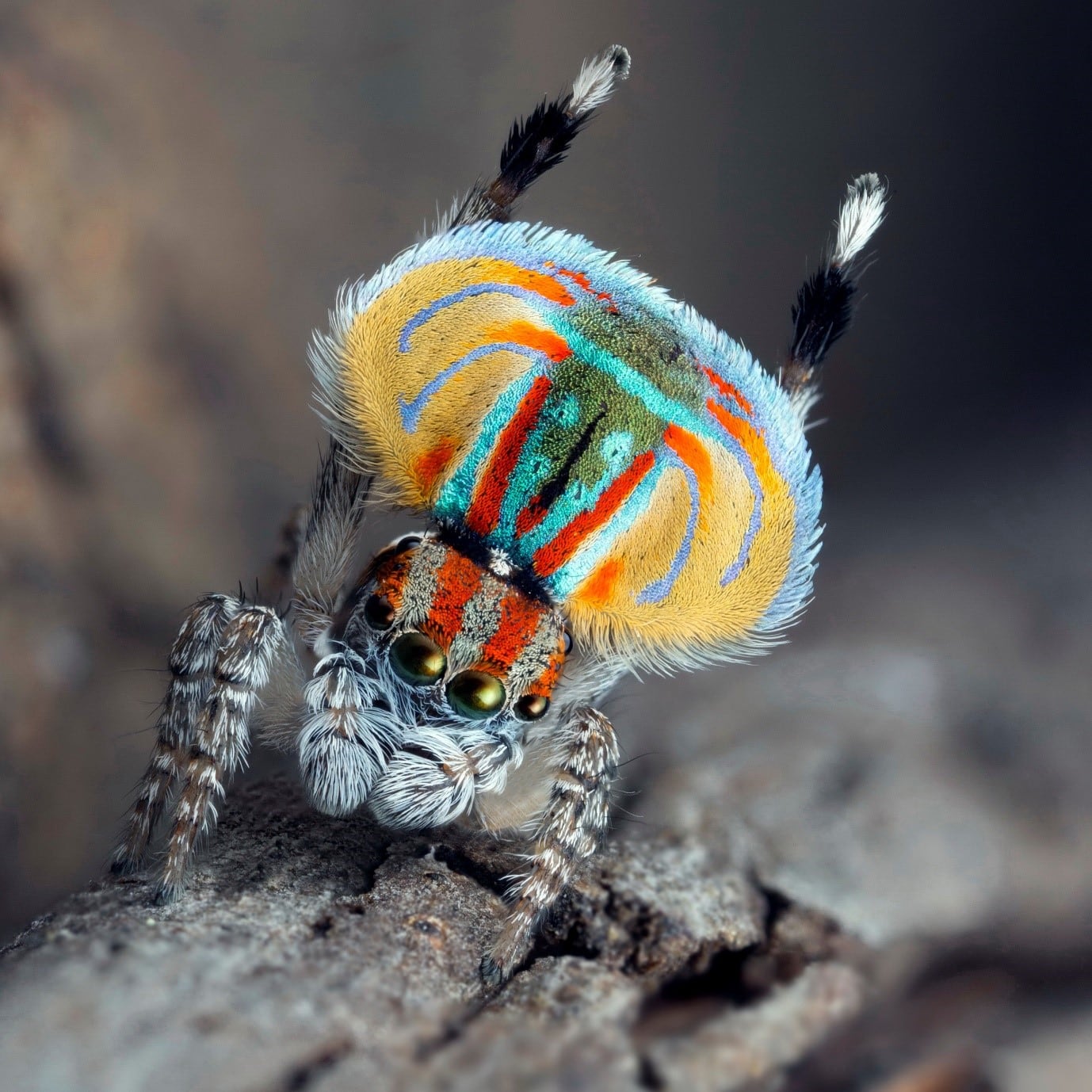Small subject matter, big impact!
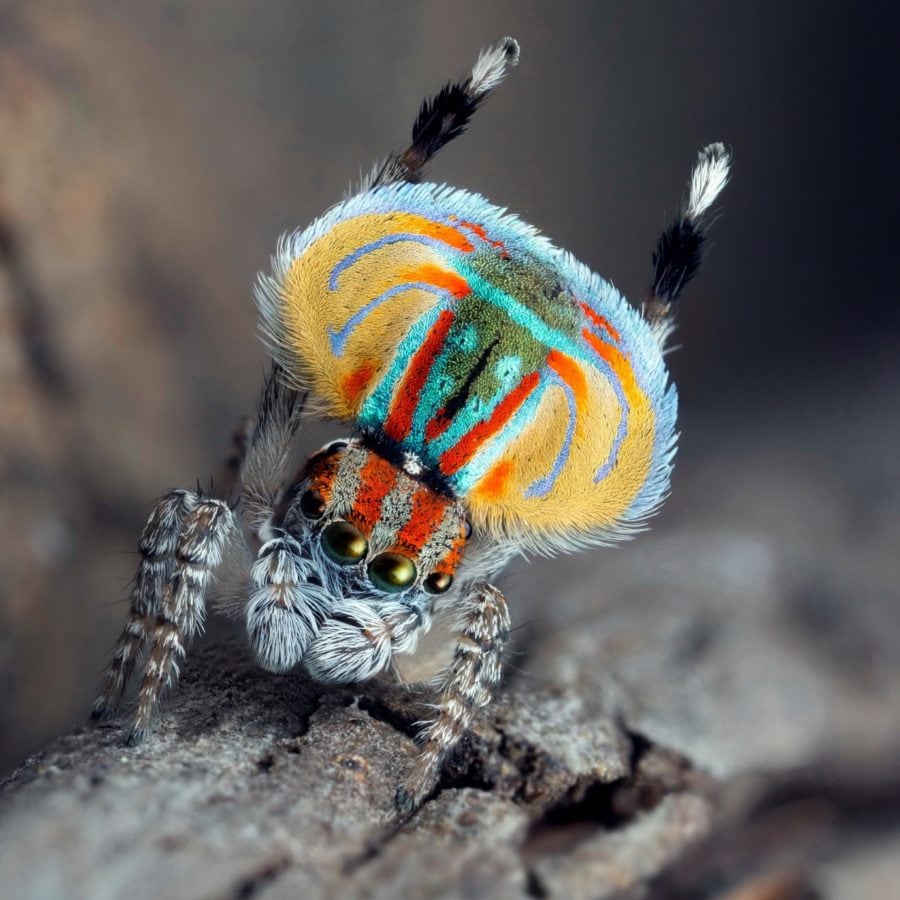
Taking photos of any living creature will take a little patience and practice.
Getting to understand your subject and anticipate its movements, knowing the distance you can approach without startling them and studying and learning their habits will make getting your image considerably easier.
This has also given me a love and appreciation of my preferred subjects namely spiders in all their diverse and amazing forms. They can be fast and move erratically, but when feeding or interested in a mate you can approach quite closely. You may even have time to do a handheld focus stack which is a great technique to increase the depth of field.
A handheld focus stack is quite easy with a bit of practice and some additional software. You have to start with your camera settings in manual including your focus. Select your ISO and white balance as you don’t want the camera altering them.
Once you have selected your aperture and shutter speed for correct exposure, adjust your focus ring so the front of your subject is in focus. Holding the camera steady, slowly move the camera forward taking one image after another with the focal plane overlapping.
Don’t adjust your focus ring. I normally have my camera on continuous shooting mode and just hold the shutter button down to avoid skewing the camera to the side.
There are quite a few different software programs available to stack your images, I have used Photoshop for years but recently started to use Zerene Stacker, I have found it to work extremely well with a hand-held focus stack.

Canon EOS-1D X Mark II
MP-E65mm f/2.8 1-5x Macro Photo f/9 – 1/160 – iso 160
16 shot handheld focus stack.
With macro photography you will often rely on using an external flash to achieve the correct exposure without your ISO being extremely high. A flash can cause hot spots on your image and make the light look unnatural. The best way to soften the light is to diffuse the flash.
There are many different diffusers available for different speed lites but it’s not that difficult to make your own. I’m currently using a Canon MT 24ex twin flash speed lite and I soften the light with 4mm packing foam and white satin fabric. The twin flash has its own problems as it will leave two spots on your subjects eyes, making them look unnatural .
By having the flash heads firing into one diffuser you can eliminate that problem. You may need to experiment to achieve a satisfactory result.
If you are using a speed lite, set the power output to manual. I normally have mine set to 1/16th, you may find it rather slow to recycle if you are taking your shots quickly and the subject may move before you can get enough shots for a stacked image, so an external battery pack can be used on many different flash units.
This will help with the recycling speed and the internal batteries last much longer. I recommend a Godox propac 960, they are capable of powering two speed lites.

Canon EOS-1D X Mark II
MP-E65mm f/2.8 1-5x Macro Photo – f/9 – 1/160 – iso 100
8 shot handheld focus stack
There are many dedicated macro lenses available made by several different manufacturers.
My personal favourite is the Canon MP-E 65mm 1 to 5x macro lens. This lens is only for close work and will not focus to infinity unlike 1 to 1 macro lenses, it is quite an expensive lens and not the easiest to start with.
There are many alternatives available to achieve macro images, including extension tubes, bellows or a macro filter to increase magnification on a standard lens. The Raynox DCR-250 Super Macro lens is great for any kit zoom lens and gives fantastic results.

Canon EOS-1D X Mark II
MP-E65mm f/2.8 1-5x Macro Photo – f/13 – 1/200 – iso 100
12 shot hand held focus stack
I started taking photos when I was in high school but it wasn’t until 8 years ago that I started macro photography. In that time I have gone from taking shots of every bug I could find in the garden to researching Peacock spiders.
This journey started with developing a love for spiders and wanting to find more species to photograph. Adam Fletcher, an old friend from high school, Michael Duncan who is an entomologist and myself got together through our shared passion for spiders and photography to set up Project Maratus, Maratus being the genus name for Peacock jumping spiders, of which there are now seventy or more known species.
Project Maratus is a not for profit self funded group undertaking and promoting research into the iconic Australian Peacock spiders.
These spiders are “Australia’s mini birds of paradise” with their intricate often flashy courtship rituals. Little is known about their status in Australia’s environment.
We are the first coordinated approach into investigating their distributions throughout Australia and the habitats they depend upon. This information plays a vital role in understanding their evolution and ecology in our environment.

Canon EOS 5D Mark III
MP-E65mm f/2.8 1-5x Macro Photo f/9 – 1/60 – iso 160
14 shot handheld focus stack.
Australia should embrace the peacock spider as a natural wonder of it’s rich and diverse environment. Their courtship interactions are truly unique and this interesting behaviour is the focus of unlocking many future scientific discoveries in communication and signalling in species.
This is a mammoth commitment by our small group often involving many 1000s of km’s of driving at a time from habitat to habitat and weeks away from home. Our dedication and passion for the natural world is what drives us. To date we have discovered seven new species which have been described and named.
We continue to conduct research trips every spring in search of new habitats to explore, in the hope of extending the range of known species and ultimately discovering new ones.
The most important thing to remember is there is no right or wrong way with macro photography, its about experimenting and enjoying our natural world.
